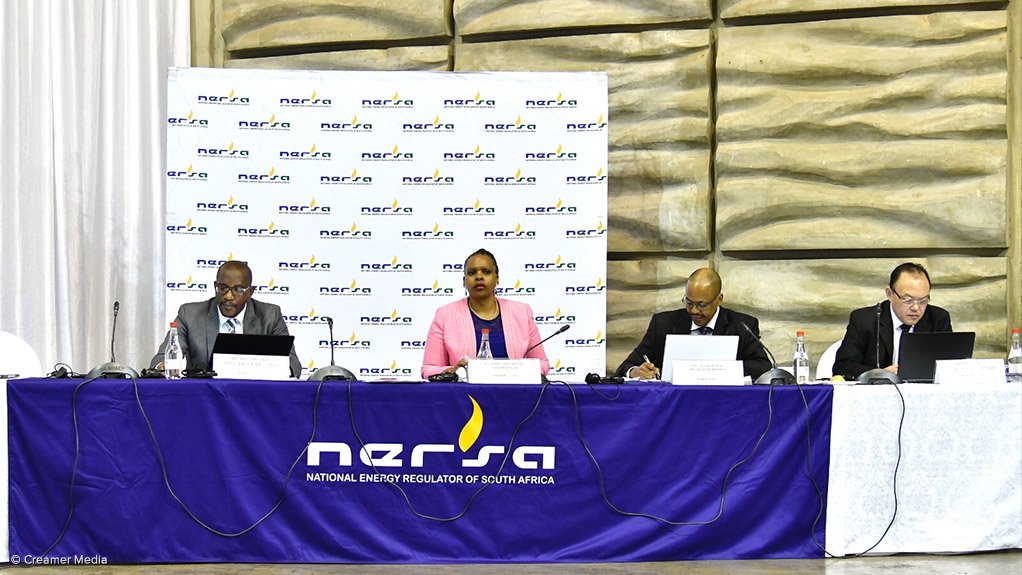/ MEDIA STATEMENT / The content on this page is not written by Polity.org.za, but is supplied by third parties. This content does not constitute news reporting by Polity.org.za.
Eskom yesterday presented its generation fleet performance as part of its fourth multi-year price determination (MYPD4) application to the National Energy Regulator of South Africa (NERSA) in Port Elizabeth.
NERSA is holding public hearings across the country for the next three weeks on Eskom’s two applications.
The first application, which is backward looking, is the regulatory clearing account (RCA) application of R21.6 billion for the fifth year (2017/18) of the MYPD 3 period.
The second application is the MYPD 4 revenue application of R219 billion for 2019/20; R252 billion for 2020/21 and R291 billion for 2021/22, which translates to a 15% average price increase for each year of the MYPD 4 period.
Yesterday’s presentation follows the one presented in Cape Town earlier this week on the 14 and 15 of January 2019.
Presenting on Eskom’s Generation Performance, Brad Ross-Jones - Middle Manager in the Generation Group, said that there are numerous contributing factors to the decline in generation plant performance.
“The root cause goes back to the late 90’s when Eskom needed to make decisions on building new stations by 1999 at the latest, to meet demand by 2007 but was not allowed to. This meant that the final investment decision could only be taken in December 2006 which was too late,” Ross-Jones said.
“This was later exacerbated by delays in the construction of Medupi and Kusile. It should also be noted that one of the key reasons for the delays was an accelerated design period as a result of the late decision and the subsequent over-optimistic expectations on delivery dates,” he said.
This all led to inadequate capacity to meet demand meaning inadequate maintenance space to perform an ideal level of preventative maintenance, particularly mid-life refurbishments.
Eskom is operating an ageing Generation fleet, notwithstanding the new power stations under construction. More than half of the stations and more than half of the coal-fired stations will be over 37 years old by the start of the MYPD 4 period.
Due to various constraints, most notably inadequate capacity and financial limitations, the mid-life refurbishment and enhancement projects that are required to maintain and improve technical performance as plants age, have generally not been implemented.
Together with high plant utilisation that places higher than expected wear and tear on components and systems, in particular since 2008, this has contributed to a steady decline in generating plant availability over the past decade.
“In the lead up to and during the 2010 World Cup, Eskom had a de facto obligation to meet national electricity demand embodied by the “Keep the Lights On” (KLO) requirement in Eskom’s Shareholder Compact and required Eskom to both defer maintenance and run the plant very hard when it was available,” Ross-Jones said.
“Continuing the car analogy, what Eskom had to do in order to avoid load shedding was to run the car above the red line for extended periods whilst taking it in every 30 000km instead of every 20 000km as advised by the manufacturer,” he said.
This situation was not sustainable and in subsequent years, planned maintenance levels and spend were increased despite the fact that this resulted in load shedding. This was essential but only possible because the Shareholder removed the KLO requirement from the Shareholder Compact from 1 April 2013.
Due to a combination of performance improvements, additional capacity from both Eskom and IPPs, as well as stagnant demand, energy availability improved to 78% in 2017/18 from a low point of 72%.
“This improvement was, unfortunately, short-lived and the reasons for this latest decline are many, complex and varied. The historical under-maintenance and hard running of an ageing fleet still has the highest impact on plant failures, but shortages of experienced skills and staff morale, driven by the recent State Capture and current uncertainty are also amongst the contributing factors,” Ross-Jones said.
As with all complex problems, the solution is not simple but can be made simpler by focussing on what’s most important.
- Costs have to be reduced, but in a manner that ensures that the skills we do have and require are retained and even sourced from outside whilst reviving the morale of all staff.
- Even with significant cost reductions, the price of electricity must increase to restore the Generation performance levels.
- An optimum level of maintenance must be executed, even if this means high levels of expensive OCGT usage and/or load shedding.
- The new build units at Medupi and Kusile are not performing as expected, mostly due to design defects that need to be addressed.
- All activities and targets that do not directly contribute to the above points should be parked until Eskom is sustainably stabilised.
The hearings continue in Durban today and tomorrow.
Issued by Eskom
EMAIL THIS ARTICLE SAVE THIS ARTICLE ARTICLE ENQUIRY
To subscribe email subscriptions@creamermedia.co.za or click here
To advertise email advertising@creamermedia.co.za or click here











